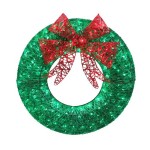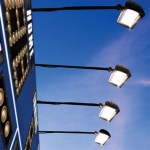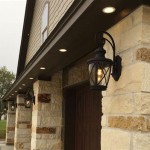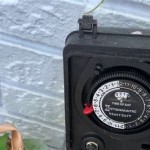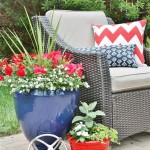Best Bulb For Outdoor Lights Indoors: A Comprehensive Guide
The practice of repurposing outdoor light fixtures for indoor use has gained traction in recent years, driven by design trends, cost-effectiveness, and a desire for unique aesthetics. However, selecting the "best bulb" for such an application requires careful consideration due to differences in intended application, safety considerations, and desired effects. This article will explore the key factors to consider when selecting light bulbs for outdoor fixtures used indoors, delve into suitable bulb types, and provide guidance on optimizing lighting for various indoor spaces.
Understanding the Key Differences: Indoor vs. Outdoor Lighting
Outdoor light fixtures are typically designed to withstand harsh weather conditions, including rain, snow, extreme temperatures, and UV radiation. Consequently, they often feature durable construction, weather-resistant seals, and specific electrical characteristics designed to operate reliably in these environments. Bulbs intended for outdoor use are therefore often chosen for their robustness, longevity, and ability to efficiently illuminate larger areas.
Indoor environments, on the other hand, present a vastly different set of considerations. Durability against the elements is less critical, but factors such as color rendering index (CRI), color temperature, dimming capabilities, and energy efficiency become increasingly important. Furthermore, the aesthetics of the bulb itself, its compatibility with dimmer switches, and its potential impact on overall interior design are all important factors to evaluate.
When repurposing an outdoor fixture indoors, it is crucial to bridge this gap by selecting a bulb that not only fits the socket and provides adequate illumination, but also complements the indoor setting and meets safety standards.
Key Considerations When Choosing Bulbs for Outdoor Fixtures Indoors
Several key factors dictate the suitability of a bulb for use in an outdoor fixture placed indoors. Addressing these factors proactively will significantly enhance the lighting experience and ensure safety.
Socket Compatibility and Wattage: The first and most fundamental consideration is the socket type and maximum wattage rating of the outdoor fixture. The bulb chosen must physically fit the socket (e.g., E26 for standard medium base, E12 for candelabra base) and must not exceed the fixture's maximum wattage specification. Exceeding the wattage rating can lead to overheating, electrical hazards, and potential damage to the fixture or the building's wiring. Check the fixture label or manufacturer's instructions for these specifications.
Light Output and Color Temperature: Light output, measured in lumens, determines the brightness of the bulb. The required lumen output depends on the size of the room, the intended use of the space, and personal preferences. For general ambient lighting, higher lumen outputs are typically desirable. For task lighting or accent lighting, lower lumen outputs may be more appropriate.
Color temperature, measured in Kelvin (K), describes the "warmth" or "coolness" of the light. Lower Kelvin values (2700K-3000K) produce a warm, yellowish light, which is often preferred for living rooms and bedrooms as it creates a cozy and inviting atmosphere. Higher Kelvin values (4000K-5000K) produce a cool, bluish-white light, which is often preferred for kitchens, offices, and bathrooms as it provides better visibility and energy. Consider the existing decor and the intended mood of the room when selecting the appropriate color temperature.
Color Rendering Index (CRI): The Color Rendering Index (CRI) measures the bulb's ability to accurately render the colors of objects compared to natural sunlight. A higher CRI (80 or above) indicates better color accuracy. For areas where accurate color representation is important, such as art studios or dressing rooms, bulbs with a high CRI are crucial. While outdoor lighting may not always prioritize CRI, it is highly recommended for indoor setting. Bulbs with a CRI of 90 or higher will allow colors to appear naturally and vibrantly.
Dimming Compatibility: If dimming capabilities are desired, ensure that both the bulb and the dimmer switch are compatible. Not all bulbs are dimmable, and using a non-dimmable bulb with a dimmer switch can damage both the bulb and the switch. LED bulbs, in particular, require dimmer switches specifically designed for LEDs. Consult the bulb and dimmer switch specifications to confirm compatibility.
Energy Efficiency and Lifespan: Energy efficiency is an important consideration for reducing energy consumption and lowering electricity bills. LED bulbs are significantly more energy-efficient than incandescent bulbs, consuming up to 75% less energy and lasting considerably longer. Halogen bulbs are more efficient than incandescent bulbs but less efficient than LEDs. When choosing a bulb, compare the lumen output and wattage to determine the energy efficiency. A bulb with a high lumen output per watt is more energy-efficient. Also consider the expected lifespan of the bulb. LED bulbs typically have lifespans of 15,000 to 25,000 hours or more, while incandescent bulbs typically last only 1,000 to 2,000 hours.
Safety Certifications: Look for bulbs that are certified by recognized safety organizations such as UL (Underwriters Laboratories) or ETL (Electrical Testing Laboratories). These certifications indicate that the bulb has been tested and meets safety standards for electrical safety and performance. This is paramount in assuring that there is little cause for concern when selecting bulbs to be used indoors, particularly if the intended fixture was originally designed for outdoor use.
Suitable Bulb Types for Indoor Use in Outdoor Fixtures
Several types of bulbs can be effectively used in outdoor light fixtures repurposed for indoor use, each with its own advantages and disadvantages. Choosing the right bulb will depend on the specific application, desired aesthetic, and budget.
LED Bulbs: LED (Light Emitting Diode) bulbs are generally the preferred choice for indoor lighting due to their exceptional energy efficiency, long lifespan, and versatility. They are available in a wide range of color temperatures, lumen outputs, and shapes, making them suitable for various applications. LED bulbs also offer excellent dimming capabilities when paired with compatible dimmer switches. Their low heat output also makes them a safe option for enclosed outdoor fixtures used indoors. Look for LEDs with high CRI for best color rendering. They can also be more costly upfront but their longevity will save money over time.
Halogen Bulbs: Halogen bulbs offer a brighter, whiter light compared to incandescent bulbs and are also more energy-efficient. However, they are less energy-efficient than LEDs and have a shorter lifespan. Halogen bulbs also generate more heat than LEDs, which may be a concern in enclosed fixtures. They can be dimmable, but compatibility with the dimmer switch should be verified. Halogen bulbs also contain gases that can be hazardous if the bulb is broken, so caution is required during handling and disposal. Due to safety and energy concerns, they are not most suitable choices in indoor lighting.
Incandescent Bulbs: Incandescent bulbs are the traditional type of light bulb and are relatively inexpensive. However, they are highly inefficient, converting only a small percentage of their energy into light and the rest into heat. They also have a short lifespan compared to LEDs and halogens. While they offer a warm, inviting light, their energy inefficiency and short lifespan make them a less desirable choice for indoor lighting, especially in fixtures that may already have limited ventilation due to their outdoor design. With increasing regulations and a shift towards energy-efficient alternatives, the availability of incandescent bulbs is diminishing.
CFL Bulbs: Compact Fluorescent Lamps (CFLs) were once considered a more energy-efficient alternative to incandescent bulbs. They use significantly less energy and have a longer lifespan. However, they contain mercury, which poses an environmental hazard if the bulbs are broken. CFLs also require a warm-up time to reach full brightness and may not be compatible with all dimmer switches. Their light quality can also be less desirable compared to LEDs, and they are being phased out in favor of more advanced LED technology.
Optimizing Indoor Lighting with Repurposed Outdoor Fixtures
Successfully integrating outdoor light fixtures into indoor spaces requires a thoughtful approach to optimize the lighting effect and create a cohesive design. Consider the following strategies:
Strategic Placement: Carefully consider the placement of the fixture to maximize its effectiveness and create the desired ambiance. Use outdoor wall sconces as accent lighting in hallways or living rooms. Outdoor pendant lights can be used as statement pieces in dining areas or entryways. Path lights can be repurposed as decorative floor lamps, provided they are stable and safe. Ensure the fixture is properly mounted and wired to prevent accidents.
Layering Lighting: Create a balanced and visually appealing lighting scheme by layering different types of lighting. Combine ambient lighting (general room illumination), task lighting (focused lighting for specific activities), and accent lighting (decorative lighting to highlight features) to create depth and interest. For example, an outdoor pendant light can provide ambient light in a dining room, while table lamps can provide task lighting for reading or working. A repurposed outdoor spotlight can be used to accent a piece of art, or collection of plants.
Color Temperature Harmony: Maintain a consistent color temperature throughout the room to create a harmonious aesthetic. Mixing different color temperatures can create a jarring and unpleasant effect. Choose bulbs with the same color temperature for all the light fixtures in the room, or intentionally vary the color temperature to create specific moods or highlight certain areas.
Dimming for Ambiance: Utilize dimming capabilities to adjust the light level and create different moods. Dimming the lights can create a cozy and intimate atmosphere for relaxation or entertainment. It also allows you to conserve energy when less light is needed. Ensure that the bulbs and dimmer switches are compatible to avoid flickering or buzzing. Smart bulbs can also be programmed to gradually dim and brighten at times during the day to enhance well-being and mimic natural light.
Aesthetic Considerations: Choose bulbs that complement the style of the outdoor fixture and the overall interior decor. Consider the shape, size, and finish of the bulb to create a cohesive look. For example, a vintage-style LED Edison bulb can enhance the rustic charm of an outdoor lantern. Or, if the outdoor fixture is more modern, a globe-shaped bulb would allow the fixture to maintain its contemporary design. The focus should always be on creating a unified and visually appealing lighting scheme.
Safety First: Always prioritize safety when working with electrical fixtures and bulbs. Turn off the power at the circuit breaker before installing or replacing bulbs. Use insulated tools to prevent electrical shock. If you are unsure about any aspect of the installation, consult a qualified electrician. Inspect the fixture and wiring regularly for any signs of damage or wear. It is also important to ensure that the fixture is properly grounded to prevent electrical hazards.

Grow Lights For Beginners Start Plants Indoors The Foodie Gardener

The Best Smart Led Light Bulbs For 2024 Reviews By Wirecutter
How To Choose The Best Outdoor String Lights

The 3 Best Smart Outdoor Lights For Backyards Of 2024 Reviews By Wirecutter

Best High Power Led Light Bulbs 120w 6500k E27 E40 Lamp Daylight Equivalent To Watt Of Halogen Incandescent Fluorescent For Indoor Outdoor Luminaires China Replacement Lamps

The 3 Best Smart Outdoor Lights For Backyards Of 2024 Reviews By Wirecutter

The Best Smart Led Light Bulbs For 2024 Reviews By Wirecutter
The Best Smart Light Bulbs In 2024

The Best Smart Led Light Bulbs For 2024 Reviews By Wirecutter

Indoor Vs Outdoor Lighting Are They Interchangeable Kirby Electric

